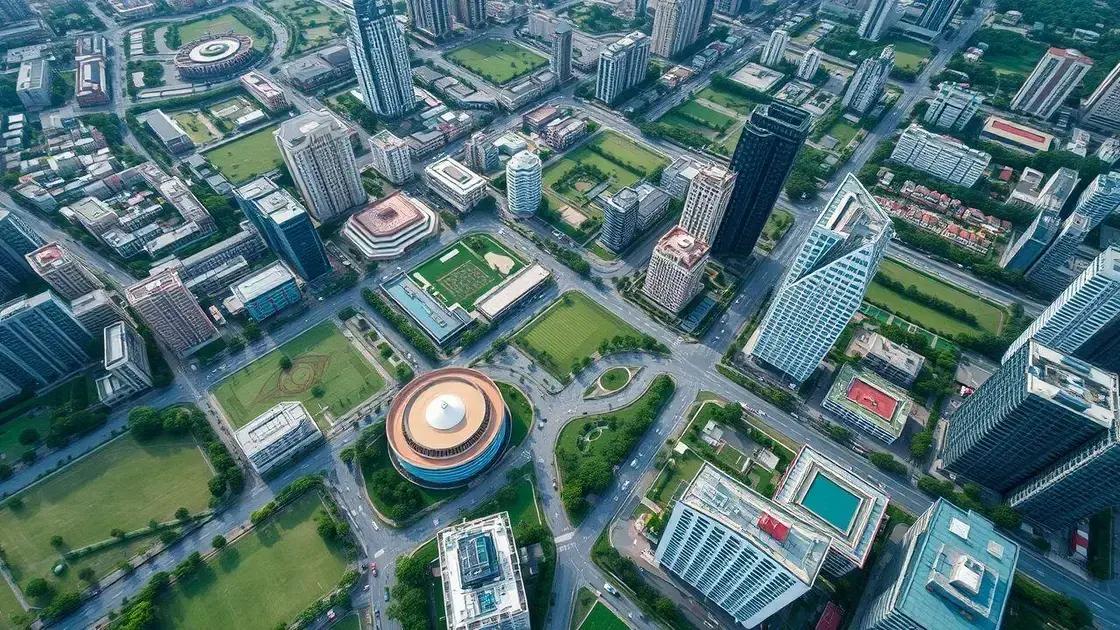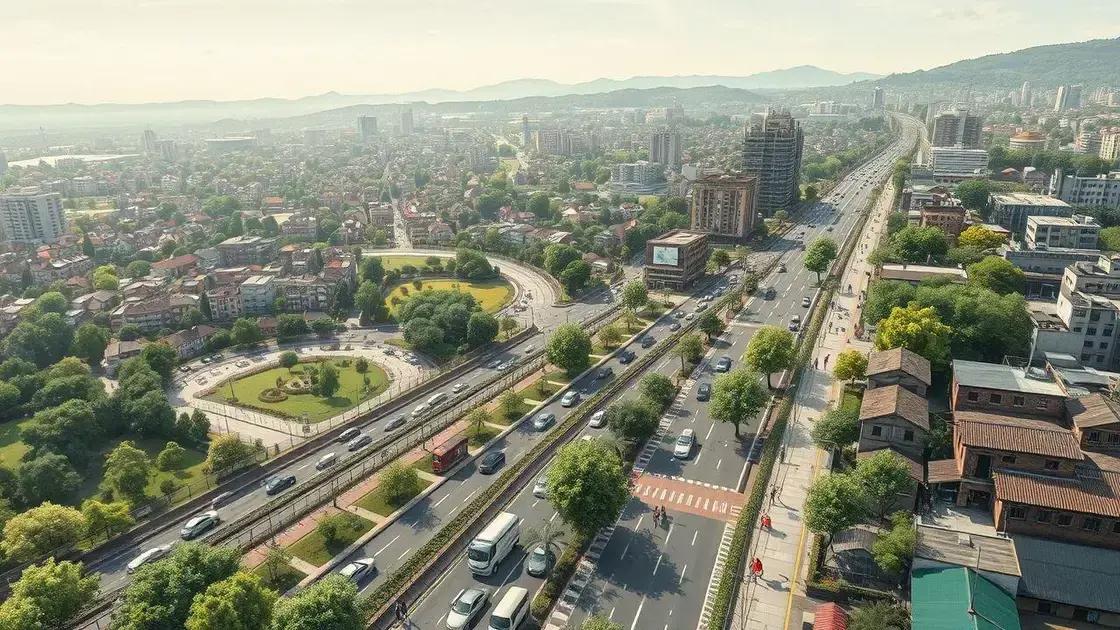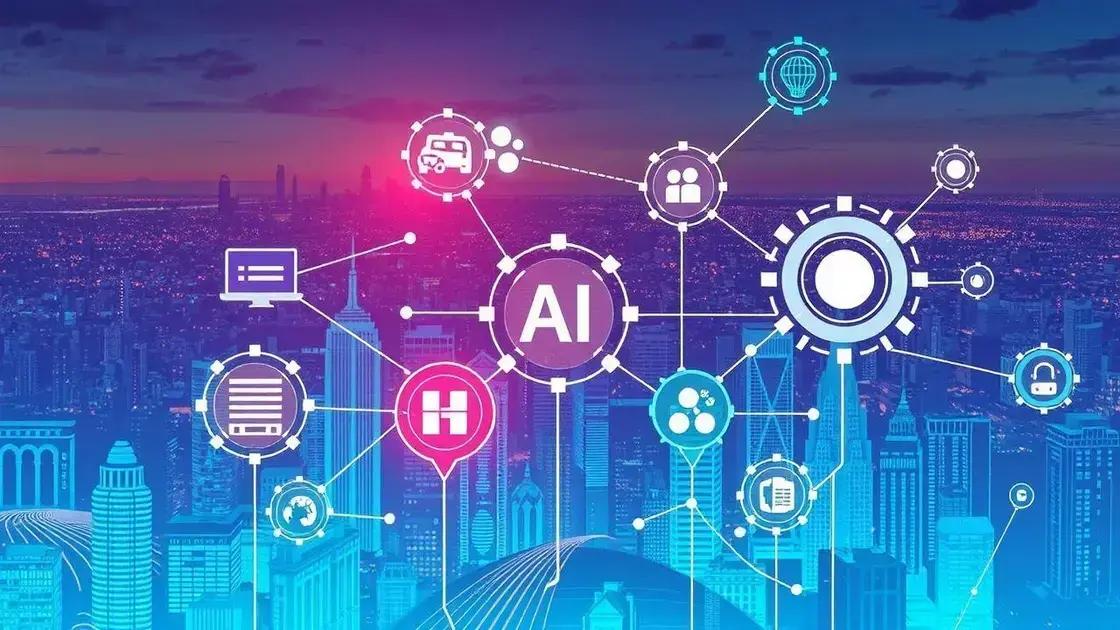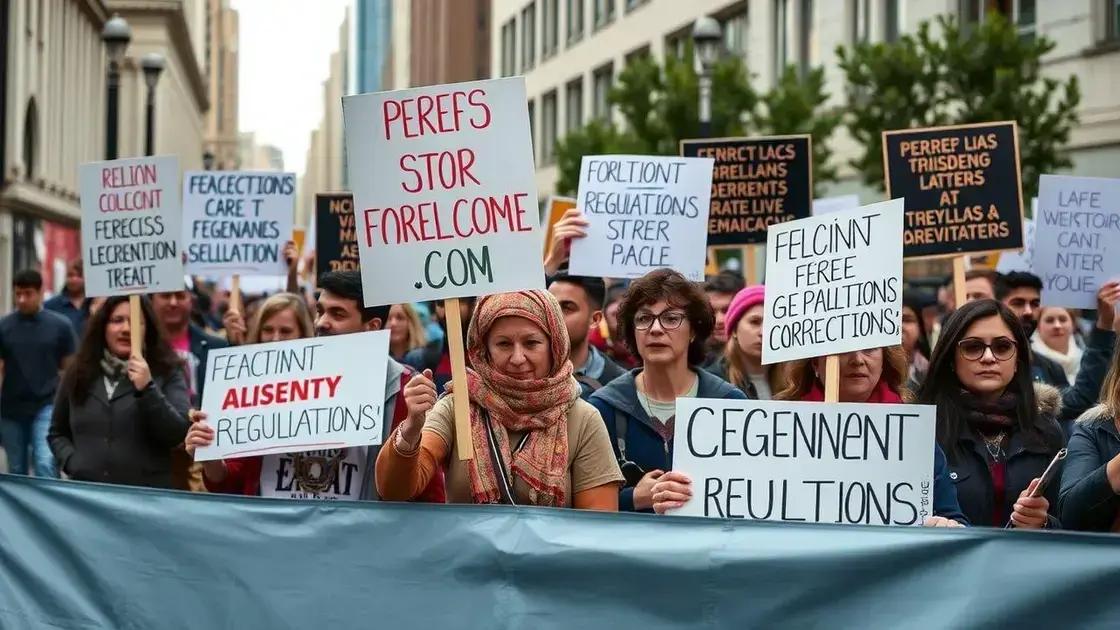City planning: Strategies for sustainable urban development

The future of city planning focuses on smart technologies, sustainability, and community involvement to create efficient, livable, and resilient urban environments that cater to the evolving needs of residents.
City planning plays a crucial role in shaping the urban environments where we live, work, and play. Have you ever wondered how thoughtful designs influence our everyday lives? Let’s dive into the strategies behind sustainable urban development.
Understanding the importance of city planning
The significance of city planning cannot be overstated. It shapes the spaces we inhabit and influences our daily lives. Effective city planning ensures that our communities are livable, sustainable, and vibrant.
Understanding the role of city planning is essential. It helps to create urban areas that are functional and harmonious. When cities are well-planned, they can meet the needs of residents while enhancing their quality of life.
Key Benefits of City Planning
There are several benefits to effective city planning:
- Improved public health through accessible green spaces.
- Enhanced transportation networks that reduce congestion.
- Increased economic opportunities and community engagement.
City planning also plays a crucial role in environmental sustainability. By integrating green architecture and sustainable practices, cities can minimize their ecological footprint.
Moreover, community input is vital in the planning process. Engaging local residents ensures that their needs and preferences are considered. This leads to a more inclusive approach to development.
Challenges in City Planning
However, city planning faces various challenges. Limited budgets can constrain projects, while rapid population growth often leads to overcrowding. These issues necessitate innovative solutions and careful consideration of long-term impacts.
Balancing growth with sustainability is another critical aspect. City planners must ensure that urban expansion does not come at the expense of natural resources.
In summary, the importance of city planning lies in its ability to create environments that are sustainable, inclusive, and adaptable. By understanding its role, we can work towards building better cities for future generations.
Key principles of sustainable urban design
Understanding the key principles of sustainable urban design is essential for creating cities that are not only livable but also environmentally friendly. These principles focus on maximizing efficiency and minimizing the impact on the environment.
Sustainable urban design encourages the integration of green spaces within urban areas. Parks and gardens provide much-needed greenery and enhance the quality of life for residents. Additionally, they help regulate temperatures and improve air quality.
Principles of Sustainable Urban Design
Several principles guide sustainable urban design:
- Compactness: Designing cities in a way that promotes density and reduces sprawl.
- Mixed-use development: Combining residential, commercial, and recreational spaces to promote walkability.
- Energy efficiency: Incorporating renewable energy sources to power buildings and public spaces.
- Sustainable transportation: Creating infrastructure that supports walking, biking, and public transit, reducing reliance on cars.
Another important aspect of sustainable design is the use of innovative materials and technologies. Eco-friendly materials help reduce resource consumption and pollution. For instance, using recycled materials in construction decreases waste and conserves resources.
Incorporating community feedback is crucial as well. Engaging residents in the planning process ensures that their needs are addressed, leading to a more sustainable and inclusive community.
The Role of Nature in Urban Design
The integration of nature into city planning is vital. Water features, such as ponds and streams, not only enhance beauty but also support biodiversity. Furthermore, incorporating native plants can help promote resilience against climate-related challenges.
To create resilient cities, urban planners must consider climate adaptation strategies. This involves designing spaces that can withstand extreme weather events, such as floods or heatwaves. Ultimately, focusing on sustainability ensures that our cities can thrive for generations to come.
Challenges in modern city planning

The challenges in modern city planning are numerous and complex. As cities grow, planners must tackle various issues to create sustainable and livable environments. One major challenge is managing rapid population growth, which often leads to overcrowding and strain on infrastructure.
In addition, balancing development with environmental sustainability is crucial. City planners face the task of creating spaces that support economic growth while also preserving natural resources.
Urban Sprawl
Urban sprawl is a significant concern. As cities expand outward, valuable agricultural land can be lost. This encroachment impacts food production and can contribute to habitat destruction.
- Loss of green spaces and natural habitats.
- Increased traffic congestion and pollution.
- Higher costs associated with infrastructure maintenance.
Moreover, funding is a critical issue. Many cities are limited by tight budgets, making it difficult to implement necessary projects. This can result in aging infrastructure, lacking public services, and insufficient public transport systems.
Engaging communities is another challenge facing city planners. Achieving genuine community input can be difficult. Planners must ensure that diverse voices are heard, representing all residents fairly.
Climate Change Adaptability
Additionally, addressing climate change is a pressing issue for modern city planners. They need to design cities that are resilient to extreme weather events such as floods, hurricanes, and heatwaves. This requires innovative and adaptable designs.
Effective planning must consider long-term impacts and integrate smart technologies. By embracing technology, cities can enhance efficiency and improve residents’ quality of life while minimizing their environmental footprint.
Ultimately, overcoming these challenges requires vision, collaboration, and a commitment to sustainable practices in city planning. By addressing these issues head-on, we can create thriving urban areas that serve future generations.
Community involvement in urban development
Community involvement in urban development is essential for creating cities that truly meet the needs of their residents. When communities are actively engaged in the planning process, the results are more inclusive and effective.
One of the primary benefits of community involvement is enhanced trust between residents and planners. When people feel their voices matter, they are more likely to support development initiatives. Additionally, input from a diverse range of community members can lead to innovative ideas that planners might not have considered.
Methods of Engagement
There are various ways to facilitate community involvement:
- Public meetings: These gatherings allow residents to express their thoughts and ask questions about development projects.
- Surveys and questionnaires: Gathering feedback through surveys can help planners understand community needs better.
- Workshops: Interactive workshops enable community members to collaborate on design concepts and solutions.
Engagement also involves informing residents about proposed changes and developments. Effective communication is vital to ensure everyone is on the same page and has access to the necessary information.
Furthermore, considering the demographics of a community is crucial. Planners must ensure that they are reaching all segments of the population. This includes engaging underrepresented groups, ensuring that every perspective is heard.
Benefits of Community Input
Community input leads to better decision-making. With diverse perspectives, planners can identify potential issues early on and adjust plans accordingly. This proactive approach helps avoid conflicts and enhances project legitimacy.
Incorporating local knowledge can also improve projects. Residents know their neighborhoods best, and their insights can guide effective solutions. Ultimately, successful urban development is about creating spaces that reflect the community’s identity and values.
Involving the community in urban development not only fosters a sense of ownership among residents but also leads to more sustainable and effective planning outcomes. This collaboration sets the stage for vibrant, thriving neighborhoods that work for everyone.
The future of city planning: Trends and technologies
The future of city planning is rapidly evolving, influenced by new trends and technologies. As urban areas grow, planners are adopting innovative approaches to create sustainable and efficient cities.
One major trend is the increasing focus on smart cities. These cities utilize technology to improve the quality of life for residents. Smart technologies can enhance traffic management, energy efficiency, and public safety.
Innovative Technologies in Urban Planning
Technologies shaping the future of city planning include:
- Data analytics: Planners use big data to understand urban dynamics and make informed decisions.
- GIS (Geographic Information Systems): GIS helps visualize spatial information, enabling better land use planning.
- IoT (Internet of Things): Smart sensors collect real-time data about city conditions, aiding in responsive planning.
Moreover, the use of modular and prefabricated construction is on the rise. These methods allow for quicker build times and reduce waste. This approach can address housing shortages more efficiently.
Another key trend is the emphasis on sustainability. Planners are increasingly incorporating eco-friendly materials and designs in new developments. This commitment reduces the environmental impact of urban growth.
Community-Centric Approaches
In addition to technology, the future of city planning focuses on community engagement. Planners are prioritizing inclusivity, making sure to involve residents in the decision-making process. This trend fosters a sense of ownership and ensures that developments reflect community values.
Mobility solutions are also evolving. Cities are investing in public transportation systems that are both effective and sustainable. Biking infrastructure and pedestrian-friendly spaces are becoming standard in urban design.
Looking ahead, the integration of technologies and a commitment to sustainability will drive the future of city planning. Planners must continue adapting to changing needs and challenges to create cities that thrive in the years to come.
FAQ – Frequently Asked Questions about the Future of City Planning
What is a smart city?
A smart city uses technology and data to improve the quality of life for residents, enhancing services like transportation, energy, and public safety.
Why is community involvement important in urban planning?
Community involvement ensures that residents’ needs and preferences are addressed, leading to more effective and accepted planning outcomes.
How does sustainability play a role in city planning?
Sustainability focuses on creating eco-friendly environments by using renewable resources, reducing waste, and promoting green spaces.
What innovative technologies are shaping urban development?
Technologies like data analytics, Geographic Information Systems (GIS), and the Internet of Things (IoT) are helping planners make better, data-driven decisions.






